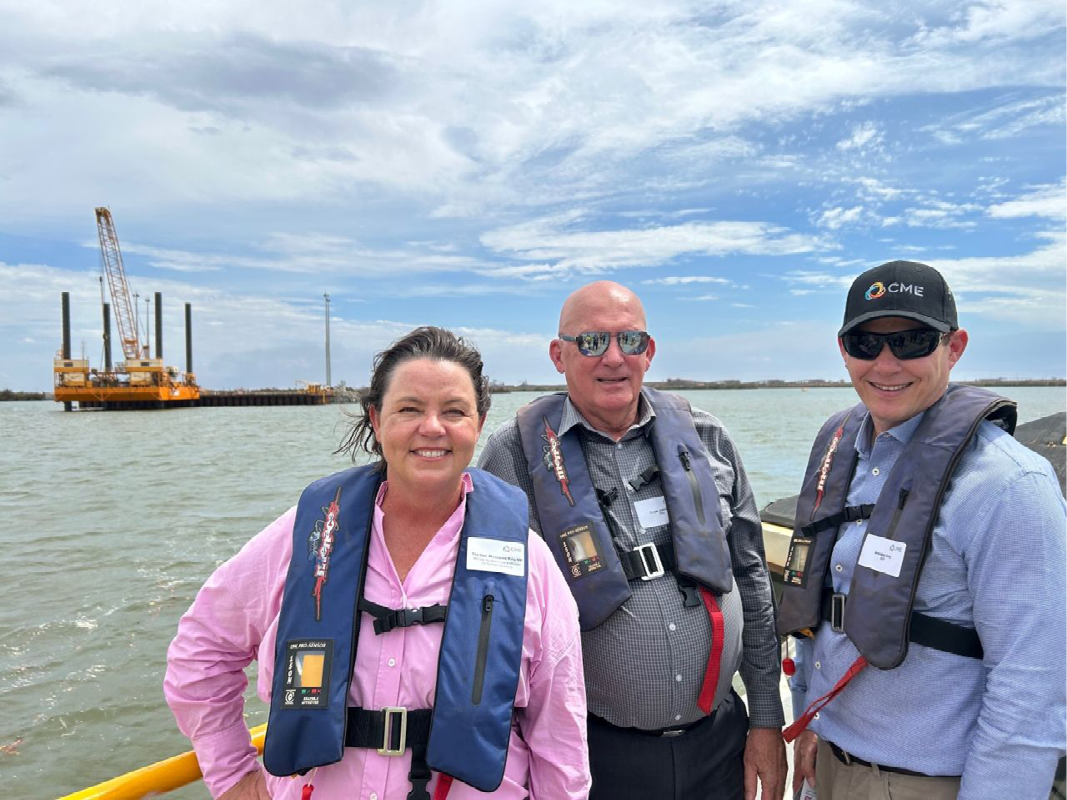Outgoing ports boss Roger Johnston has reflected on nearly 12 years at the helm of the Pilbara Ports Authority – a time he says was marked by vast technological change, growth of the port and the upheaval and uncertainty of the COVID pandemic.
Mr Johnston’s contract as Chief Executive Officer concludes on June 30, ending a tenure that began with his appointment for three years as CEO of the Port Hedland Port Authority in January 2012.
With extensive experience in logistics as Executive Director of Boral in Western Australia and chair of its National Logistics Council, Mr Johnston said he arrived to find a business that “wasn’t in good shape”, and barely paying for itself.
Weary from the extensive travel of his previous position and motivated to “go somewhere and make a difference”, Mr Johnston first had to stabilise the business and improve a poor safety record.
By the time of his first annual report, he said the port had experienced an incomparable period of growth, aided by high demand for iron ore, Fortescue completing its third berth and BHP an additional two berths.
“A renewed focus on sound fiscal trading, coupled with a record level of trade over this period, has seen the PHPA generate revenue of $155.1 million and a profit before tax of $46.2 million,” Mr Johnston said in the annual report.
“This represents a significant turnaround and a much-improved financial performance from the previous financial year.”
Growth through port authority rationalisation was on the horizon.
The Pilbara Ports Authority was formed in 2014 by the amalgamation of the former port authorities of Dampier and Port Hedland and the PPA now encompasses the ports of Ashburton, Dampier, Port Hedland and Varanus island.
In 2021/22, the total annual throughout was 733.1 million tonnes, with the value of commodities passing through its ports reaching $165 billion.
And the jewel in the crown is the Port of Port Hedland, with throughput of 561.1 million tonnes and a new port plan approved with a target of 660 million tonnes.
But they are just the numbers.
“The actual success of the port is fixed in its people,” Mr Johnston said. “When we amalgamated I asked the staff for the values they considered most important. The highest response was excellence. They wanted to be excellent and they wanted to be trained, and because it’s a small community they said we should support our suppliers.
“We settled on excellence, respect, integrity. Then courage was added. The thinking was that the port was going to grow and the culture needed to ensure that people had the courage to speak up.”
The desire for excellence led to remarkable technological improvements that enabled the port to increase throughput without major infrastructure changes.
Advancements included an industry-leading tidal study that redefined the depths along the 42km shipping channel. The breakthrough is now recognised nationally and internationally.
A better understanding of the depth of the channel combined with the use of an under-keel clearance system and the use of real-time weather and sea data enables vessels to be loaded with as little as 90cm keel clearance.
“The technology we developed revealed that we had 1.6m more depth at the end of the channel than the charts showed,” Mr Johnston said.
“It takes ships two-and-half hours to transit the channel and during that time the tide falls a metre an hour, but with 1.6m more it means you can load more on the ship. So, on average vessels leaving Port Hedland now carry 10 to 12,000 tonnes more than they ever did before.”
It is the sort of success and innovation that has driven Mr Johnston during his time as CEO.
“When you’re enjoying what you’re doing and there are new challenges every day… that’s what keeps things alive and buzzing. The business has been expanded, there’s a lot of training, teaching, meeting new people and bringing them on board.
“PPA is now recognised worldwide for excellence and a lot of our technologies are so advanced we give presentations internationally including in China, Abu Dhabi, the UK, Rotterdam.
“Being in the difficult circumstances we were in, meant we had to get on an invent new ways of doing things.”
Mr Johnston said much of the port operations now are self-sustaining, reducing the need to call on outside expertise, which could lead to delays that would affect shipping movements, potentially costing millions of dollars.
The COVID pandemic, which occurred during his second contract extension as Chief Executive Officer, presented the most challenging time of his tenure.
“COVID struck and we were seen as being at the leading edge of port operations so the other ports reached out and I lost chief operations personnel and harbour master and I had to run the day-to-day operations,” he said.
“When it struck, the borders closed and we had real problems. For example, 70 per cent of all marine pilots were FIFO from Queensland and the east coast and we couldn’t get access to them easily.
“Obviously, you can’t move ships without pilots. So, it was a mad scramble to convince people we needed to get our pilots in and design quarantine arrangements especially for them.
“They were having to go to work with full PPE, get on board the ship, do their job, come back and go home and we were having meals delivered. It was a complete change in the way we operated.
“I had an excellent team and twice a week we met to consider the latest advice, regulations and how it affected us.
“During that time, I was selected on to the federal transport committee for management of COVID around ports around the country.
“It became obvious to me very quickly that no-one had any idea what they were doing. They didn’t have an idea of how practique worked (the permission for a ship to enter a port, embark or disembark, discharge or load cargo or stores).”
Against the backdrop of the Ruby Princess fiasco, in which COVID infected passengers were left to disembark from the passenger ship when it arrived in Sydney, spreading the virus nationally, Mr Johnston drew up plans for keeping Port Hedland safe.
“I’d seen how the Ruby Princess was managed. We couldn’t do that here, so I devised an approach, and it was signed off by everybody,” he said.
With ports seen as potential gateways for the infection but the resources sector given dispensation to continue operations, the PPA’s COVID action plan was needed six weeks later when the cargo vessel Patricia Oldendorff arrived and 17 of 21 crew members subsequently tested positive for the virus.
Mr Johnston said the effects of COVID on staff, particularly marine pilots, started to become apparent about 12 months ago.
“There was fatigue and people were really worn out. During COVID everyone ran really hard just to keep the show going and in the meantime the volumes kept going up,” he said.
Now, Mr Johnston believes the port and Port Hedland are set for a period of growth.
The new port plan has been approved, with development timelines and funding for South West Creek, Stanley Point Berth 3, Lumsden Point, development of the maritime precinct and the Spoilbank Marina.
“The marina and the buyback scheme were outside our operations, but the Government turned to us because they knew we can get things done,” he said.
Asked how he would like people to remember his time at the PPA, he said: “I hope they think they had a really good culture within the organisation, they enjoyed working there and were trained. So, forever in their minds as part of their careers they’ll say we spent time at Pilbara Ports and that was the bloke running the joint at the time.
“I think that’s a pretty good legacy.”


